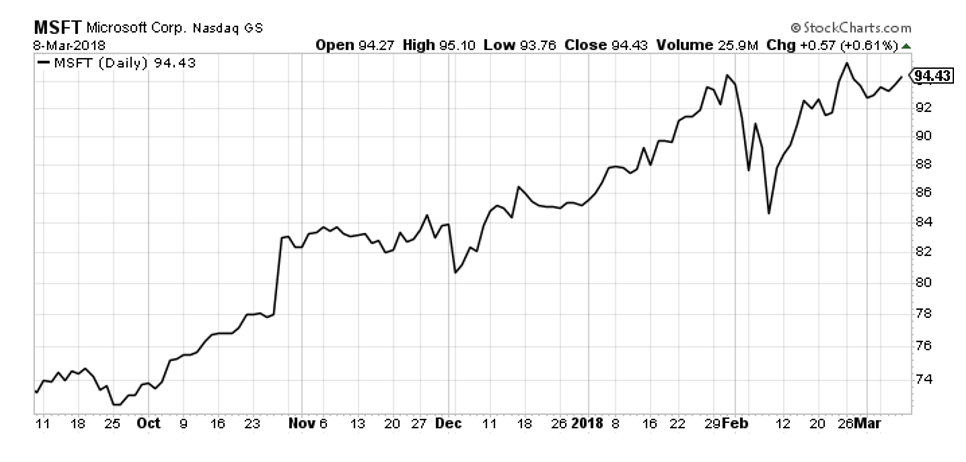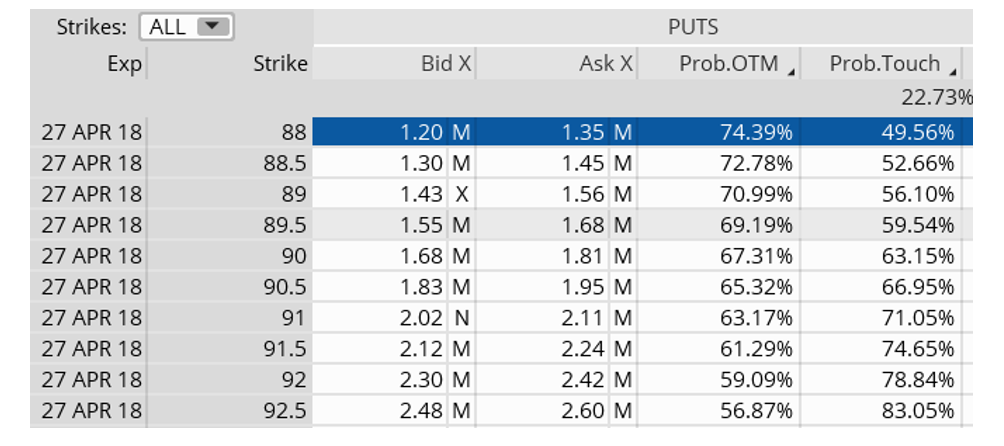Today, I’d like to tell you about my favorite income strategy.
It’s a strategy that has allowed subscribers in my High Yield Trader service to reap 226.7% in Gold Miners ETF (NYSE:GDX), 143.6% in Microsoft (NYSE: MSFT) and 98.1% in Apple (NASDAQ: AAPL) all within the last four years. In MSFT alone we are averaging 4.4% per trade. Might not sound like much, but as you can see in the performance over time it adds up . . . and that’s what counts.
The strategy is called put selling and it is the synthetic equivalent of a covered call, but with far better benefits.
Both strategies have the same risk/reward profile, meaning they have the same net investment and profit potential.
Selling puts allow you to generate a steady, reliable stream of income without actually owning any stock.
And if you want to own a certain stock, you can purchase it at the price you want. The best part is this: While you’re waiting for the stock to hit a specified price, you are able to continuously collect income . . . essentially getting paid to be an investor. So, why would you ever set a limit price when you could sell puts and collect income while waiting for your price to hit? That wouldn’t make sense.
Let me use an example from our High Yield Trader portfolio.
Microsoft is a stock I like to sell puts on (and covered calls for that matter). It’s a company that I feel comfortable owning for the long haul mostly due to its unwavering quest to please shareholders. The company continually buys stock and pays a healthy 3.1% dividend.
The stock is currently trading for $94.43.
 Remember when I said we want to get paid to be investors? Well, given our desire to own Microsoft at, say, $88 – we can get paid. Think about that: we can get PAID to agree to buy a stock at a lower price that we prefer…and we can collect a steady stream of income while we wait.
Remember when I said we want to get paid to be investors? Well, given our desire to own Microsoft at, say, $88 – we can get paid. Think about that: we can get PAID to agree to buy a stock at a lower price that we prefer…and we can collect a steady stream of income while we wait.
 I don’t want to get into the details in this short column, but we can sell one put contract that gives us the ability to buy 100 shares of Microsoft at $88 a share – and collect an immediate $125.
I don’t want to get into the details in this short column, but we can sell one put contract that gives us the ability to buy 100 shares of Microsoft at $88 a share – and collect an immediate $125.
And no matter what happens, we get to keep that $125.
But for the sake of understanding, we should examine the alternative – Microsoft closing below $88 by option expiration.
In that case, we’d keep the $125 and be forced to buy Microsoft stock at $88 per share.
In our case, we’d actually own the stock for $86.80 per share – that’s the $88 strike price minus the $1.20 premium. That is 8.1% less than Microsoft’s current market price. And remember, in most cases we are typically selling puts for months before being put the stock, so our cost basis will be far less.
The important thing to remember is that if the stock trades below $88 by option expiration, you become a shareholder just like everyone else … but at a discount.
Plus, you’d get the dividend going forward of at least $168 per 100 shares, as each share pays a $1.68 annual dividend.
To me, the 6.8% return in the trade is superb given the current yields on bonds and other safe investments . . . and the likelihood of Microsoft raising dividends going forward.
Simply, selling puts is not inherently dangerous. If used correctly, it’s no more dangerous than any other type of investment. In fact, it’s often safer.
And if you’re truly interested in income, it’s something you owe to yourself to investigate.
— Andy Crowder
Source: Wyatt Investment Research

